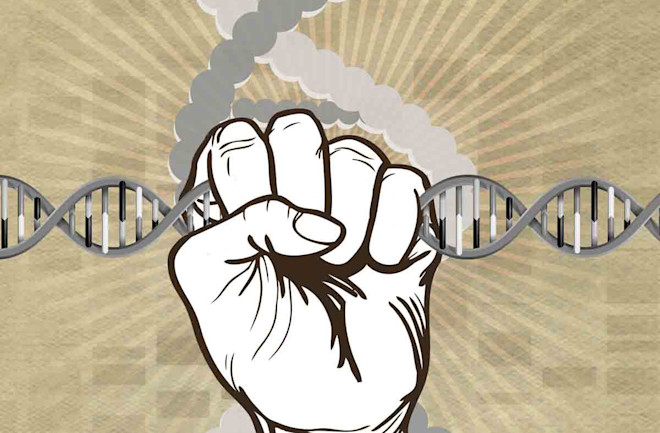Smacking a bell on his desk, George Cachianes summons the class to order. Twenty-six teenage biotechnologists cluster at three tables. Cachianes teaches Principles of Biotechnology — he calls it “Welcome to Graduate School” — to a select group of juniors and seniors at Abraham Lincoln High School in San Francisco.
His Room 22 is not just a classroom, but a functioning laboratory. Its equipment, acquired through grants and donations, can handle tasks such as sequencing DNA and analyzing proteins. But today’s lesson is about a newer technology, a means for altering the genes of any organism — and, potentially, its offspring. It’s called Crispr-Cas9.
An elegant tool with an inelegant name, Crispr-Cas9 has electrified the biotech world. Molecular biologists, biomedical researchers, and movers and shakers throughout the life sciences have adopted it. Compared with earlier methods to tweak the genomes of bacteria, plants, laboratory mice and human cells, the Crispr-Cas9 gene-editing method is fast, precise and cheap, an order of magnitude better than the others. What’s more, it’s simple enough for high school kids to use.
Barely 4 years old, Crispr-Cas9 was pioneered by Jennifer Doudna, a scientist across the bay at the Berkeley campus of the University of California. Doudna and her collaborator Emmanuelle Charpentier, from the Max Planck Institute for Infection Biology in Berlin, were studying how bacteria recognize and chop up invading viruses to eliminate them as a threat. The two realized that the bacterial defense system could be harnessed to scientists’ own ends. They designed what Doudna calls a “programmable DNA-cleaving enzyme.”

